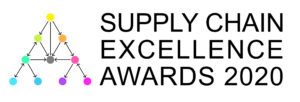Second-wave, third-wave, localised outbreaks, regional outbreaks… Covid-19 has supply chains on edge. Can traditional models of risk management keep pace with the new world, or does it require something more radical? Christopher Walton investigates.
If Covid-19 hit any supply chain discipline hard it was risk management. Within weeks exponential risk was everywhere, from procurement to inventory, to logistics and storage and to the health and safety of employees.
So, as economies emerge from lockdown, supply chain practitioners have taken stock. What happened in lockdown will be studied for a long time, and supply chain needs time to cement some learnings.

Debbie Bowen-Heaton, partner at Oliver Wight EAME, says the pandemic has reinforced to many supply chain professionals, the need to truly understand the demand patterns of not only their customers but their customers’ customers.
“Whilst some businesses have completely flatlined, others have found themselves overwhelmed by a surge in demand. This has put into sharp focus, the absolute necessity for businesses to be able to predict when this type of peak in demand is likely to happen and to have the planning processes in place to enable quick, responsive and effective decisions,” she says.
The pandemic has forced businesses across all sectors to look at supply chains in a way that they have not done in a long time, considering both the immediate impact and longer term, says James Crayton, commercial partner at Walker Morris.
“The pandemic led to a colossal supply chain interruption – the most extreme examples being hygiene and medical supplies – and the double blow of hugely increased demand globally and thin stockholding is not something that will be forgotten in a hurry.
“The orthodoxy of supply chains has been challenged by the pandemic and supply chain professionals have focussed on the importance of resilience when it comes to global supply chains. Prior to Covid-19, some businesses had an ‘out of sight, out of mind’ approach to their supply chains, where as long as the cost was low, limited thought was given to resilience, and some of those businesses have really taken a hit.”
Crayton says that supply chain resilience will be a major focus for businesses in the post-pandemic world, including looking at having a wider variety of suppliers geared up to provide the same product to provide insurance in the event of a second wave, or other low-likelihood, high-impact interruption.
A lasting impact of the pandemic is likely to be more businesses bringing their supply chains closer to home, he also argues: “The sudden shock since Covid-19 emerged has led to a realisation that businesses need to have significantly more oversight of their supply chains.
“Every supply chain manager will now be assessing the resilience of their supply chains and asking themselves: What are the worst-case scenarios that I need to cater for? Can we source from alternative suppliers in the event of a natural disaster or a or global pandemic interrupting our supply?”
Equally, he says, supply chain professionals should ask what if there is suddenly a huge spike in demand? And what level of stockholding do we need to have to accommodate this?
Models of traditional
Given that the societal and economic models that are emerging from the impact of the pandemic are often referred to as the new world, another question worth considering is whether traditional supply chain practices still apply.
To that end, risk management traditionally has tended to be quite reactive in terms of how it is deployed by organisations, says Nick Pike, chief revenue officer at Vizibl. “Where it will evolve will be towards a much more proactive problem solving approach, whereby the organisations involved will have an underlying ongoing level of rigour around the governance of the relationship, access and transparency on real-time data and then be able to proactively problem solve together.

“This,” he says, “will not be something that relates to only the supply chain organisation. What we will see is a broader cross-organisational flow of data from supply chain, procurement and the business, all acting in tandem to generate visibility across the whole relationship.”
While there has been a lot of commentary on nearshoring and economic nationalism, companies are seeking a pragmatic balance which avoids future vulnerability in the supply chain, says Oliver Dick, consultant in the procurement and supply chain practice at Odgers Berndtson. He argues that for most manufacturing companies this means focusing on dual sourcing, building in flexibility into the supplier base and utilising local team expertise in regional markets.
“Supplier visibility is now critical, and OEMs are looking at suppliers further down the chain to secure the long-term continuity of supply for their Tier 1 suppliers,” he says of the impact of the pandemic. “Committing suppliers to forecasts and prioritising logistics channels has become the norm. What’s more, manufacturers are looking far more forensically at their suppliers and are having detailed conversations with them about their production capacity, workforce levels and contingency plans. These conversations will be part and parcel of conducting risk management for the foreseeable future.”
Digitisation versus digitalisation
Yet wasn’t the digitisation, and subsequent digitalisation of supply chains supposed to make all this pain go away? Sadly, technology isn’t a silver bullet, and can only react to the situation it finds itself in. Mike O’Malley, vice-president of carrier services at Radware, a network and application security specialist, explains that digital supply chain technology is responding in two ways.
Firstly, he says, by incorporating more and better security architectures that have the ability to secure a network and the applications with a single automated policy. “It acts like a pane of glass that allows management a view across disparate networks and applications worldwide, across public cloud and private clouds, traditional data centres and machine-to-machine and Internet of Things connections.”
Secondly, O’Malley says, digital supply chain technology is reacting byy selecting a managed security service to build operate and manage the security solution across the supply chain. “This,” he says, “allows the business to focus on its core competencies. Covid and the impending recession are causing a significant ramp up in the adoption of automation solutions to lower operational costs, reduce dependency on manual labour, and increase supply chain resilience, and redundancy by eliminating human errors.
“Having a view of what is happening at all times isn’t humanly possible. When it comes to security you simply can’t make the decisions quickly enough when the network is under fire.”
Risks need to be assessed both from demand and supply perspectives, cautions Madhav Durbha, group vice-president at LLamasoft. “From a demand standpoint, traditional techniques evolved around leveraging historical time series data to derive forecasts. However, with emerging AI based techniques, one can blend in external data signals along with historicals to better sense shifts in demand patterns.
“Modern supply networks are extremely complex, and the various functions are highly interdependent, though they tend to operate in silos,” says Durbha. “However, the emerging digital twin technology can help draw end-to-end connections and provide visibility across these silos. Advanced AI powered algorithms can be deployed on top of the digital twin to perform a variety of scenarios and simulations to help assess supply risks and mitigation plans.”
Furthermore, says Durbha, digital twin technology also allows businesses to test the performance of a hypothetical redesigned supply chain strategy, before any changes are made to the real thing. This, he says, means that businesses can prepare for any elements of risk they can imagine, stress test their supply chains, allowing them to prepare a playbook for business continuity planning.
Third wave
With localised lockdowns already responding to further waves of Covid-19, the fear is a large wave in the winter, that sees another high spike in cases and widespread lockdowns again.
“The pandemic provides valuable learning and motivation to ensure that the supply chain is better prepared for the future,” says Bob Sibik, senior vice-president and co-founder of Fusion Risk Management. “The key to surviving any future disruptions is to focus on risk and resilience management. Looking back, those businesses that took contingency planning seriously and regularly evaluated their disruption preparedness prior to the pandemic, were in much better shape to face the disruption and limit the impact on their supply chain.
“To put it simply: to avoid similar issues in the future businesses should already begin preparing for the second or possibly a third Covid-19 wave, or the next big coronavirus-esque disruption – do not wait for the next disaster to hit and halt your operations.”

The companies that will be successful during the pandemic will be the ones that recognise the abilities of their employees and how the employees can be responsive to change, says Sibik. Today, he argues, the value that the worker brings is a lot different.
“The smart companies will recognise that and will continue to maintain an adaptive workforce, that works symbiotically with the machines. These employees and machines can be utilised to produce many different products. Covid-19 has taught companies that they can quickly adapt to market changes. The pandemic is teaching us that the economy will change and the companies that can adapt to and exploit the change will emerge the leaders in their respective industries.”
But it is worth considering that supply chain risk management in the future will not be all about coronavirus. We could get over this pandemic only to be hit by a new novel virus in the not too distant future, says Jason Chester, director of channel programs at InfinityQS: “Or we could have major supply chain disruption caused by a rapidly deteriorating relationship with trade blocs. Or even be hit by a terrorist /cyber-attack event never thought possible– the list of possibilities goes on. Coronavirus has shown that it is integral to prepare for the unexpected.
“To do this, we first need to rethink risk and model risk accordingly in a new and recalibrated way,” says Chester. “Second, we must leverage digital transformation more often and quickly in order to create highly agile, adaptable and flexible end-to-end supply chain operations. We cannot become immune to risk but we can adapt to it and become resilient so that the impact on the operations is minimised.”
 You can now book your table for the night of the year in supply chain, when the Supply Chain Excellence Awards – sponsored by Clipper Logistics, DP World, Geek + and Unipart – take place on 12 November.
You can now book your table for the night of the year in supply chain, when the Supply Chain Excellence Awards – sponsored by Clipper Logistics, DP World, Geek + and Unipart – take place on 12 November.







